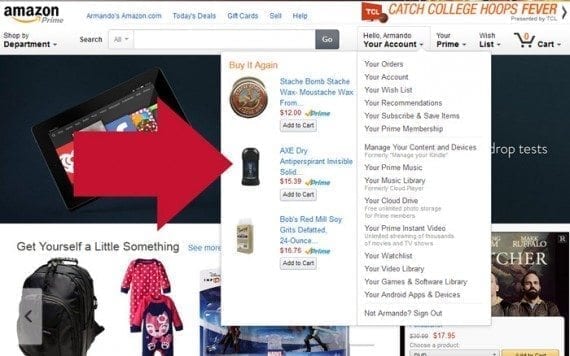There is a good analogy between marketing for long-term, loyal ecommerce customers and dating someone you hope to one day marry. Marketers who think about building customer relationships the same way they think about building personal relationships may find personalization will give them a significant competitive advantage.
Think about the difference between having dinner with someone on a first date and having dinner with your spouse. On a first date, you’d still be getting to know each other, asking questions about interests and aspirations and learning about jobs, friends, and family members.
But the conversation with your spouse would be very different. That conversation would benefit from years of shared experiences. Spouses can build on conversations they’ve already had, and reference common interests and shared aspirations rather than trying to discover them for the first time.
So why is it that when a loyal customer returns to your ecommerce site for the third, fourth, or nth time that you still treat that loyal customer like you’ve just met? You show her the same content, the same offers, and the same suggestions you would show to someone you didn’t know anything about.
Wouldn’t it be better if, like having a conversation with your spouse, you employed everything you’ve learned about each other from your previous experiences together? What follows are three ways that ecommerce personalization is a bit like dating. Use these analogies to improve your business.
1. Take a Risk; Ask for a Name
Think about the first time you met someone you’ve dated or, perhaps, even married. During that initial encounter, did you get a name? How much less personal, if you will, would that meeting have been if you did not ask for a name? How would the relationship have been different if you got a name, but forgot it the next time you met that person?
The first thing most people do when they meet is to introduce themselves and make an effort to remember each other in the event of future meetings. But many if not most ecommerce sites forget all about customer, even moments after an introduction.
In contrast, look at Amazon’s home page. If you’re a returning customer, you’re likely to see your first name at the top of the page in at least two places. Your name will be above the search bar with a link similar to “Armando’s Amazon.com.” You also should see your name to the right of the search bar, where the copy reads something like “Hello Armando, Your Account.”

Amazon uses customer names right on its home page.
Amazon is able to do this because it requires registration with checkout. It is not possible to check out as a guest or to check out anonymously on Amazon.
Ecommerce merchants that want to build lasting relationships with customers should take a risk and require registration at checkout. The information provided should be used to personalize landing pages, email messages, and other marketing.
2. Get to Know Your Customer’s Interests
My wife loves sushi. It’s her favorite meal. I also know that she likes window shopping for high-end furniture and watching action adventure movies. So when I plan a date, I start with a visit to a trendy furniture store, then do my best to take her to get spicy tuna rolls, and finish up with a John Woo film.
In a similar way, online retailers need to learn what interests its customers and make offers to appeal to them individually.
These personalized offers can take a couple of different forms, either as onsite merchandising or segmented offers made via email.
Consider Amazon, again. It populates its home page with items it thinks will interest the specific visitor. When a user clicks on the “Your Account” link, Amazon shows a few items the shopper might want to reorder. The site is personalizing based on what it has learned about a shopper from previous searches, visits, and purchases.

Amazon includes a list of items a customer might wish to reorder near the “Your Account” information.
Even small online sellers can provide a similar experience with relatively inexpensive recommendation engines that can be added to many, if not most, ecommerce platforms.
3. Be Available When You’re Needed
When a couple is dating, it is common for them to just pick up a phone and call or send short texts just to stay in touch.
An ecommerce business’s customer service should be available in a similar way, and loyal customers should have a fast track to getting a hold of someone.
Online retailers might consider using chat, email, and telephone services aimed exclusively at loyal customers.
As an example, Amazon offers a service it calls co-pilot, wherein a shopper speaking on the phone to an Amazon representative can share active Amazon.com web pages with each other. The shopper and the representative are seeing the same thing at the same time.




